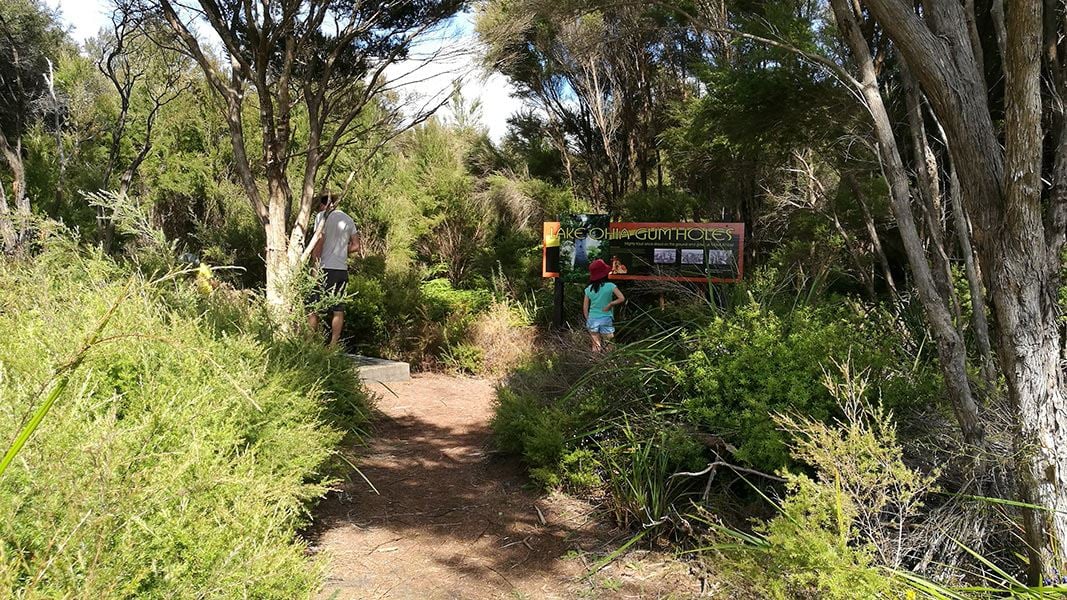
Located in Karikari Peninsula in the Northland region
Introduction
This short easy walk takes you through manuka scrub passing a series of excavated gumholes. A historical outing suitable for families.Stop kauri disease and protect kauri
- Scrub all soil off shoes and gear.
- Use cleaning stations.
- Always stay on the track.